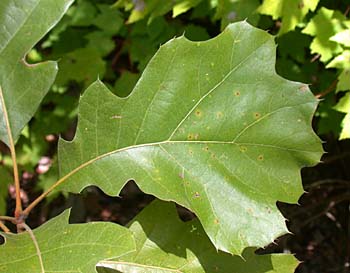
| A common, widespread, and often misidentified overstory tree. Leaves are highly variable and can resemble those of many other species, especially N. Red Oak (shade leaves) and S. Red Oak (sun leaves). At left is a typical shade leaf. Sun leaves are quite different, very deeply lobed. Black Oak leaves can be told from those of other oaks by the pubescence beneath that easily rubs off. (Note that leaves in late summer/fall may appear glabrous beneath because all the hairs have worn off.) Northern Red has pubescence only in vein axils, while Southern Red has dense pubescence that doesn't rub off easily. Durham Co., NC 9/10/02.
|
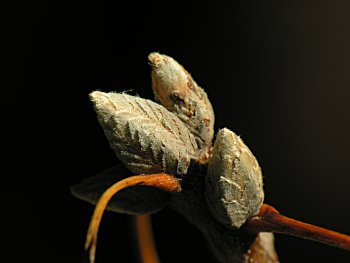
| The large terminal buds are squarish and pubescent. The twigs are thick. Orange Co., NC 10/15/06.
|
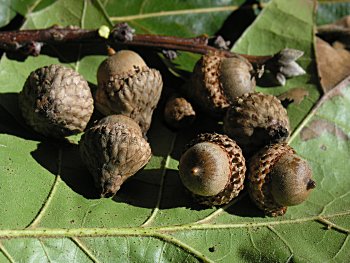
| Mature acorns. The cups come about halfway down the acorn; the edges are scaly. Note also the scruffy pubescence of the leaf underside. Orange Co., NC 10/15/06.
|
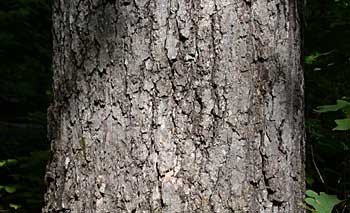
| The bark is rough and blackish, without the white vertical stripes of smoother bark found in N. Red Oak and Shumard Oak. Durham Co., NC 9/10/02.
|
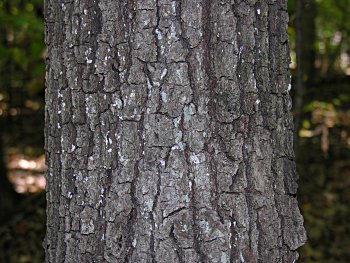
| Orange Co., NC 10/15/06.
|




